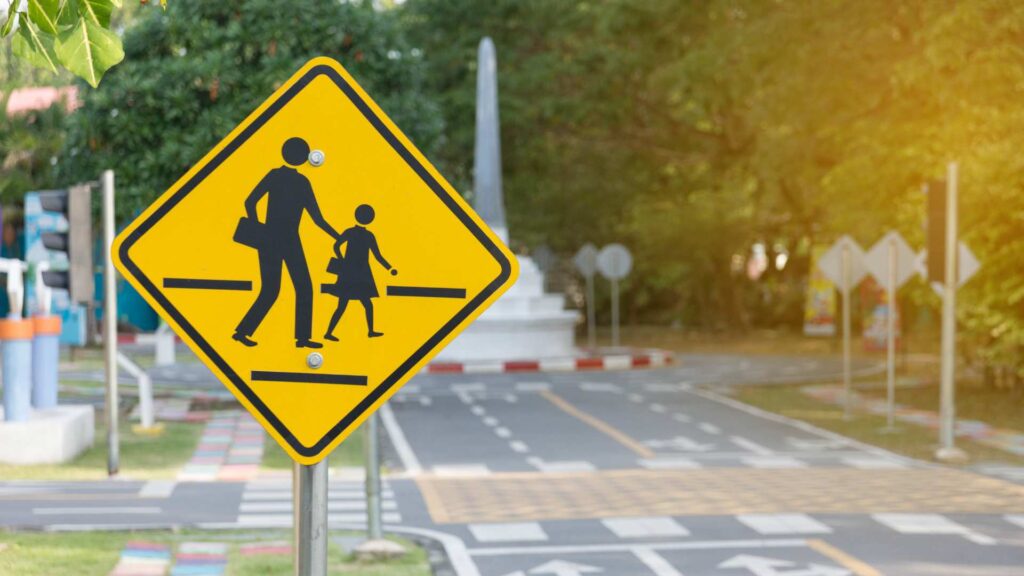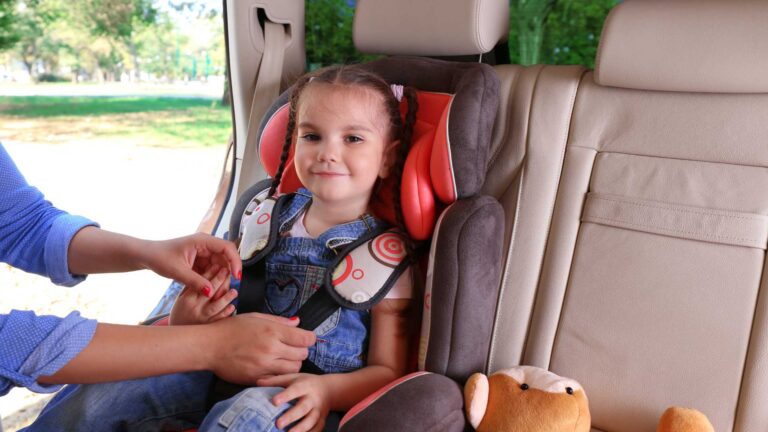Table of Contents
How do you teach a kid with autism how to cross the road?
For many parents, watching their child take their first steps toward independence is a proud yet nerve-wracking experience. However, when a child has autism, everyday tasks, like safely crossing the street or understanding traffic signals, can present unique challenges. Pedestrian skills are critical for personal safety and autonomy, yet they don’t always come naturally to children on the spectrum. If you’ve ever hesitated before letting your child walk beside you near a busy road or worried about their ability to judge traffic, you’re not alone.
Children with autism spectrum disorder (ASD) often struggle with motor coordination, attention, and sensory processing, all of which are crucial for navigating streets and intersections. The good news? With the right strategies, support, and practice, they can develop pedestrian skills that will help them move safely through the world.
In this blog by ABA Centers of America, we’ll explore why pedestrian skills are essential, the challenges children with ASD face, and effective methods for teaching them these life-saving abilities.
Why Are Pedestrian Skills Important for Children with Autism?

Pedestrian safety isn’t just about knowing when to cross the street; it’s about recognizing dangers, making split-second decisions, and staying aware of surroundings. For children with autism, who may have difficulty processing multiple stimuli at once, these skills require direct teaching and consistent reinforcement.
Many neurotypical children pick up pedestrian awareness naturally by observing others, but children on the spectrum often need structured instruction. Without these essential skills, they may be at increased risk of traffic accidents, leading to severe or even fatal consequences. Teaching pedestrian safety not only ensures physical security but also fosters independence, giving children the confidence to navigate their environment safely as they grow.
Challenges Children with Autism Face When Learning Pedestrian Skills
Understanding the risks children with autism face in pedestrian situations helps parents and caregivers implement the right interventions. Some common challenges include:
- Difficulty with Attention and Awareness: Many children with autism experience inattention or hyperfocus. They may become distracted by a sound, an object, or their thoughts, making it hard to notice approaching cars or read traffic signals correctly.
- Sensory Processing Issues: Loud noises, bright lights, and fast-moving vehicles can overwhelm a child with sensory sensitivities, leading to panic or freeze responses in dangerous situations.
- Impaired Motor Planning and Coordination: Crossing a street requires a coordinated series of actions—stopping at the curb, looking both ways and timing movements correctly. Many children with autism struggle with planning and executing these steps smoothly.
- Difficulty with Social Cues and Rules: Understanding unspoken pedestrian rules, such as making eye contact with drivers before crossing or following the lead of others at intersections, can be challenging.
- Impulse Control and Executive Functioning Delays: Some children with autism may impulsively run into the street without considering the dangers, especially if they become excited or fixated on something they want to reach.
Another primary concern for children with autism regarding road safety is elopement or wandering. This behavior is common among children on the spectrum and can happen when they feel overwhelmed, anxious, or driven by a strong interest in a particular place or object. Research published in Pediatrics found that nearly half (49%) of children with autism engage in wandering, with 65% of these instances leading to potentially hazardous situations, including incidents on roads or highways. This tendency puts them at a much higher risk of pedestrian-related accidents.

How to Teach Pedestrian Skills to Children with Autism
Individuals with autism navigate the world differently; this means that some things that we believe to be intrinsic knowledge for them are not so innate, and they need extra help and support to understand the skill or anything you want to teach them. In this case, learning pedestrian skills is not just about teaching them to cross the street; it should be a step-by-step process so they can also recognize the risks.
Here are some practical ways to help children with autism learn to navigate streets safely:
1. Break Down the Process into Simple Steps
Children with autism often learn best when educators break complex tasks into smaller, manageable steps. When teaching pedestrian skills, instructors should follow a straightforward, step-by-step process:
- Stop at the curb
- Look left, right, and left again
- Wait for a clear gap in traffic
- Cross while staying alert and walking at a steady pace
2. Use Visual Supports and Social Stories
Visual cues, such as pictures, videos, or written instructions, can reinforce learning. Social stories—short, personalized narratives that describe a situation and appropriate responses—can help children understand pedestrian scenarios in a relatable way.
3. Practice in Safe, Controlled Environments
Before stepping onto a real street, practice pedestrian behaviors in a controlled environment. This process could be a quiet parking lot, a schoolyard, or a simulated street setup at home. Gradually introduce real-world practice once the child becomes comfortable with each step.
4. Utilize Role-Playing and Modeling
Children often learn by observing and imitating others. Parents, caregivers, and therapists can model safe pedestrian behaviors by walking with children and verbalizing each step of the process. Role-playing scenarios at home can also reinforce learning.
5. Use Technology and Interactive Tools
Some children respond well to technology-based learning. Pedestrian safety apps, interactive videos, and virtual reality simulations can reinforce concepts in an engaging and controlled manner.
6. Implement ABA Therapy Techniques
Applied Behavior Analysis (ABA) is a highly effective approach for teaching pedestrian skills to children with autism. ABA therapy breaks down complex behaviors into smaller, teachable components and reinforces correct responses through repetition and rewards. Therapists can use prompting, reinforcement, and gradual exposure to help children learn and retain pedestrian safety skills.
The study “Teaching Pedestrian Safety Skills to a Child With Autism Who Exhibited Dangerous Behavior in the Street” focused on teaching pedestrian safety skills to individuals with developmental disabilities, particularly a 10-year-old boy with autism who exhibited dangerous behaviors in the street, such as walking in the middle of the road and running in front of cars. The study found that using a response-cost procedure (where tokens were lost for unsafe behavior) immediately reduced the boy’s dangerous actions in the street.
How Parents Can Support the Development of Pedestrian Skills
Parents and caregivers play a crucial role in teaching children valuable skills, not only at home but also in various environments, such as on the street and during the walk to school. By teaching safety skills like pedestrian awareness, you can equip your child with the knowledge they need to stay safe and gain more independence.
Here are some ways parents can support their child’s learning:
- Be Patient and Consistent: Repetition is crucial. Regular practice in different environments will help children generalize what they’ve learned.
- Use Positive Reinforcement: Praise and reward safe behaviors to encourage motivation.
- Walk Together Often: The more exposure children have to real-world pedestrian experiences with guidance, the more comfortable they will become.
- Create Safety Rules: Establish clear household rules about pedestrian safety, such as always holding hands near busy streets.

How ABA Centers of America Can Help
At ABA Centers of America, we recognize that pedestrian skills are just one piece of a much larger puzzle. Our ABA programs equip kids and teens with a variety of essential life skills, helping them navigate neurodiversity with confidence and independence. Through individualized therapy plans, we use proven strategies to teach safety skills, social behaviors, and adaptive skills that will benefit children and their families for years to come.
If you’re looking for support in teaching your child essential life skills, including pedestrian safety, ABA Centers of America is here to help. Contact us today at (844) 923-4222 or schedule a free consultation to learn how our tailored ABA programs can make a meaningful difference in your child’s development.
By investing in pedestrian safety training today, we’re helping to build a safer, more independent future for children with autism.







